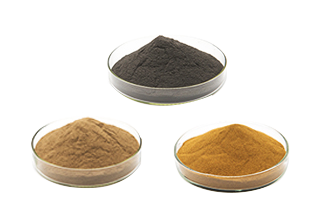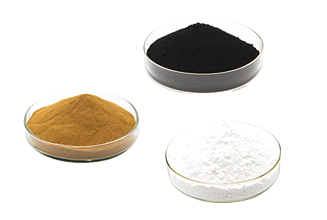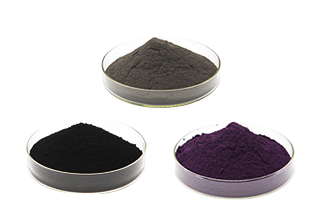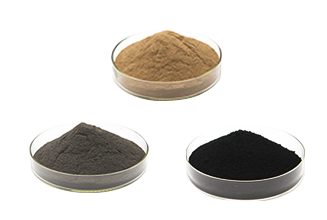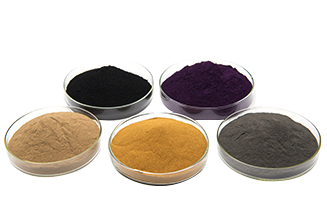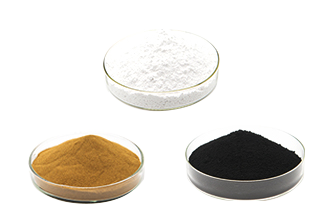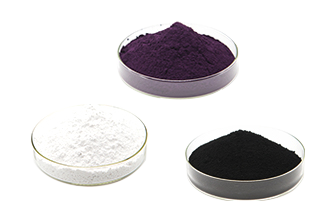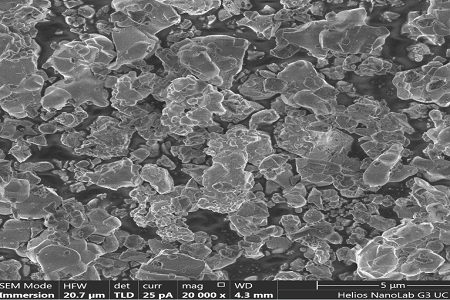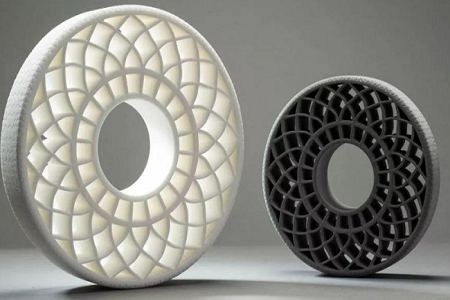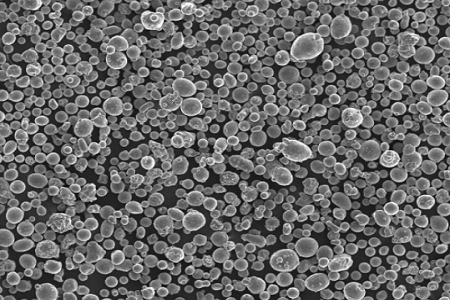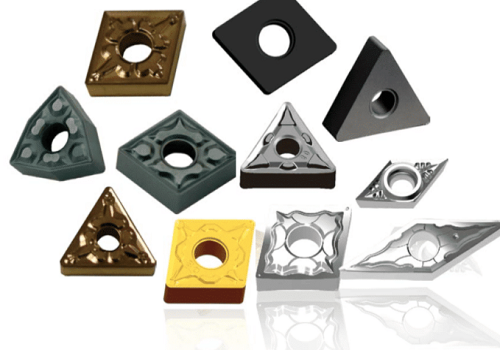Introduction to the application of titanium carbide (TiC)
Overview
The chemical formula of titanium carbide is TiC. Steel gray crystal with metallic luster. It has thermal conductivity and electrical conductivity, and its electrical conductivity decreases with increasing temperature, so it exhibits metallic properties. It is a very hard compound with high melting point, its hardness is second only to diamond, and its microhardness is 2850 kg/mm2. It belongs to the NaCl type tetragonal crystal system, with a lattice constant a=4.173×10-8cm. The melting point is 3150°C, the boiling point is 4820°C, and the relative density is 4.9. It has the same crystal lattice and the same parameters as TiN and TiO, so a series of continuous solid solutions can be formed between each other. When heated to above 1500℃ in H2 gas, de-C effect gradually occurs. It reacts with N2 gas above 1200°C to form mixed titanium carbonitride Ti(C, N) with variable composition. The rate of oxidation is slow at 800°C, but powdered TiC can burn to produce TiO2 and CO2 at 600°C in O2. It reacts with O2 gas at 1200°C to generate TiO2 and CO. It does not interact with water, but can react with water vapor to generate TiO2, CO and H2 at temperatures above 700°C. It does not react with CO, but reacts with CO2 at 1200°C to produce TiO2 and CO. It is insoluble in hydrochloric acid and lye, but soluble in nitric acid and aqua regia.
Application
1. Application of titanium carbide in multiphase materials
Titanium carbide ceramics are superhard tool materials. TiC and TiN, WC, and other raw materials are made into various composite ceramic materials. These materials have high melting point, high hardness, and excellent chemical stability. They are used for cutting tools and wear-resistant parts. Preferred materials, at the same time they have excellent electrical conductivity, they are also preferred materials for electrodes.
1.1 Tool materials: TiC composite ceramic tools have been widely used since they were successfully developed in the 1960s. Due to the dispersion of a certain proportion of hard particles TiC in the matrix, this composite tool has not only further improved The hardness also improves the fracture toughness to a certain extent, so the cutting performance is much higher than that of pure tools. A12O3-TiC system ceramics can also be used for armor materials. As a tool material, the hardness is higher than (C, N), and Ti (c, N) because of the N in it, the friction coefficient of the material to be cut such as steel is greatly reduced. Brings many advantages to cutting. Combining Ti and (C, N) into composite ceramics can combine the strengths of the two to prepare promising tool materials.
1.2 Aerospace components: In the aerospace field, many equipment components such as gas rudders, engine nozzle linings, turbine rotors, blades and structural parts in nuclear reactors must work at high temperatures, so they must have good high temperature strength . Tungsten has a high melting point, good high temperature strength and good thermal stability. It is widely used as a thermal structure material, but its strength decreases significantly with the increase of temperature ¨. Considering that the refractory carbides TiC and ZrC have a melting point above 3000~C, they have good high temperature strength, good compatibility with tungsten, similar thermal expansion coefficient, and a much lower density than tungsten. The strength of TiCp/w and ZrCp/w composites gradually increases with the increase of temperature. TiCp/w and ZrCp/w have the highest strengths at 1000°C and 800°C, respectively, which are significantly improved compared to their room temperature strengths. Then the temperature continued to rise and the intensity decreased. The peculiar high-temperature strength of the composite material is due to the transformation of the w matrix from brittleness to plasticity with the increase of temperature, which makes the TiC and ZrC particles enhance the plastic matrix more significantly at high temperatures, resulting in excellent high-temperature strength of the composite material. The TiC particles have a better high temperature enhancement effect on the matrix than the ZrC particles.
1.3 Surfacing electrodes: TiC can be used for surfacing electrodes. From the perspective of surfacing electrodes applied at home and abroad, those with surfacing layer hardness HRC>50 are all strengthened with CrxCy, WC and other hard points. This series of surfacing electrodes Although the welding rod has good wear resistance, the crack resistance of the surfacing layer decreases sharply with the increase of hardness. 400-600℃ must be preheated during welding, which directly affects the popularization and application of wear-resistant surfacing electrodes. Experimental studies have shown that the increase in the amount of ferro-titanium, the increase in the amount of TiC in the surfacing layer, the higher the hardness of the surfacing layer, and the higher its wear resistance. Because TiC has high hardness and dispersion distribution, it can be extremely hard. Greatly improve the hardness and wear resistance of the surfacing layer. This new type of electrode has a hardness of HRC>60. Continuous surfacing welding of 50cm long welds on low-carbon steel and low-alloy steel test panels can be used to surfacing multiple layers with water between layers. Quenching without cracking is a new breakthrough in the type of surfacing electrode.
2. Titanium carbide used as coating material
2.1 Diamond coating: The main manufacturing method of diamond tools is powder metallurgy impregnation. Because diamond is a non-metal, it has a high interface energy with general metals or alloys, so that the diamond surface cannot be infiltrated by low melting point metals or alloys, and its bonding performance is poor. In recent years, many scholars have focused on enhancing the bonding strength between diamond and metal matrix. Do a lot of research. The most widely used method is the active metal method, that is, adding a small amount of active metals such as titanium, chromium, vanadium, etc. Concentrate on the surface of the diamond, so as to realize the metallurgical combination of the diamond and the metal bond. However, the interface strength is affected by the active metal added amount, sintering temperature, time and other parameters, and requires the melting of the binder to achieve the enrichment of the active metal to the interface, because this method is not suitable for the hot pressing of diamond and metal powder in a short time solid phase sintering.
Based on the above reasons, many scholars hope to find other ways to improve the bonding strength between the diamond surface and the metal matrix. A large number of studies have found that physical or chemical plating of some strong carbides on the diamond surface to form metals or alloys, then these metals or alloys At high temperatures, it can interact with the carbon atoms on the diamond surface to form stable metal carbides. These carbides (such as C) have a good bond with the diamond surface on the one hand, and on the other hand, they can be well covered by the matrix metal. The infiltration can greatly enhance the bonding force between the diamond and the matrix metal. Depositing a layer of titanium carbide on the tool can increase the service life of the tool by 3-5 times.
2.2 Anti-tritium coatings in fusion reactors: In the research of fusion reactors, studying the anti-tritium penetration of coating materials in the fusion environment is one of the important topics in the research of fusion reactor materials. At present, the main researches are oxide and carbide coatings. Tritium permeation resistant layer of materials and composite coating materials of nitrides and carbides. People are concerned about the stability of the anti-tritium permeation layer of the coating material under large temperature gradients and thermal cycling conditions and under plasma irradiation conditions. Studies have shown that TiC coating materials and TiN+TiC composite coating materials, the anti-tritium permeation layer formed on the TiC surface layer after chemical heat treatment, can resist H ion radiation and resist large temperature gradients and thermal cycles. The anti-tritium permeation layer of these coating materials has stable performance for a long time.
2.3 Electrical contact material coating; TiC has a wide range of application prospects in new composite electrical contact materials. According to statistics, at present, silver used in contact materials in the world accounts for a quarter of all silver consumption each year. Whether the performance of silver-based composite materials can be further improved and the silver content can be reduced is a common concern of materials workers. The silver-tungsten contact material has been widely used since its inception in 1935, but the contact resistance of the silver-tungsten contact is unstable, and the temperature gradually rises during use. This is due to the contact surface during the breaking process. The oxidation of tungsten in the material forms tungsten trioxide and insulating tungstate.
2.4 Roadheader pick coating: TiC also plays an important role in improving the life of the cutting head of the roadheader. The pick is a part that directly contacts the rock during tunneling. Its life span directly affects the tunneling efficiency. S100, The picks of roadheaders such as EBJ160 have shortcomings such as low hardness, poor wear resistance, large friction coefficient, poor corrosion resistance, poor thermal conductivity, etc. The application of vacuum profiling titanium carbide film technology can solve the above problems. After the TiC film is plated, it can make The pick hardness is close to diamond, and the life span is increased by 3-5 times.
3. Titanium carbide used to prepare foam ceramics
As a filter, ceramic foam can effectively remove the inclusions in various fluids. Its filtering mechanism is agitation and adsorption. Filters require the chemical stability of materials, especially filters used in the metallurgical industry require high melting points, so most of these materials are oxides, and in order to adapt to the filtration of metal melts, the main pursuit of thermal shock resistance is to improve. Titanium carbide foam ceramics have higher strength, hardness, thermal conductivity, electrical conductivity, heat and corrosion resistance than oxide foam ceramics.
4. Application in infrared radiation ceramic materials
Titanium carbide is an intermetallic compound, which usually shows good chemical stability and will not change in valence. However, this system is a sample prepared under high temperature reduction conditions, and some titanium ions have valence changes. The valence of titanium ions are solid-melted into the structural position occupied by the cordierite structure. This structural change makes the radiation performance of the material significantly improved compared to the single emissivity near 3tma, which is conducive to the high temperature field. application.
The chemical formula of titanium carbide is TiC. Steel gray crystal with metallic luster. It has thermal conductivity and electrical conductivity, and its electrical conductivity decreases with increasing temperature, so it exhibits metallic properties. It is a very hard compound with high melting point, its hardness is second only to diamond, and its microhardness is 2850 kg/mm2. It belongs to the NaCl type tetragonal crystal system, with a lattice constant a=4.173×10-8cm. The melting point is 3150°C, the boiling point is 4820°C, and the relative density is 4.9. It has the same crystal lattice and the same parameters as TiN and TiO, so a series of continuous solid solutions can be formed between each other. When heated to above 1500℃ in H2 gas, de-C effect gradually occurs. It reacts with N2 gas above 1200°C to form mixed titanium carbonitride Ti(C, N) with variable composition. The rate of oxidation is slow at 800°C, but powdered TiC can burn to produce TiO2 and CO2 at 600°C in O2. It reacts with O2 gas at 1200°C to generate TiO2 and CO. It does not interact with water, but can react with water vapor to generate TiO2, CO and H2 at temperatures above 700°C. It does not react with CO, but reacts with CO2 at 1200°C to produce TiO2 and CO. It is insoluble in hydrochloric acid and lye, but soluble in nitric acid and aqua regia.
Application
1. Application of titanium carbide in multiphase materials
Titanium carbide ceramics are superhard tool materials. TiC and TiN, WC, and other raw materials are made into various composite ceramic materials. These materials have high melting point, high hardness, and excellent chemical stability. They are used for cutting tools and wear-resistant parts. Preferred materials, at the same time they have excellent electrical conductivity, they are also preferred materials for electrodes.
1.1 Tool materials: TiC composite ceramic tools have been widely used since they were successfully developed in the 1960s. Due to the dispersion of a certain proportion of hard particles TiC in the matrix, this composite tool has not only further improved The hardness also improves the fracture toughness to a certain extent, so the cutting performance is much higher than that of pure tools. A12O3-TiC system ceramics can also be used for armor materials. As a tool material, the hardness is higher than (C, N), and Ti (c, N) because of the N in it, the friction coefficient of the material to be cut such as steel is greatly reduced. Brings many advantages to cutting. Combining Ti and (C, N) into composite ceramics can combine the strengths of the two to prepare promising tool materials.
1.2 Aerospace components: In the aerospace field, many equipment components such as gas rudders, engine nozzle linings, turbine rotors, blades and structural parts in nuclear reactors must work at high temperatures, so they must have good high temperature strength . Tungsten has a high melting point, good high temperature strength and good thermal stability. It is widely used as a thermal structure material, but its strength decreases significantly with the increase of temperature ¨. Considering that the refractory carbides TiC and ZrC have a melting point above 3000~C, they have good high temperature strength, good compatibility with tungsten, similar thermal expansion coefficient, and a much lower density than tungsten. The strength of TiCp/w and ZrCp/w composites gradually increases with the increase of temperature. TiCp/w and ZrCp/w have the highest strengths at 1000°C and 800°C, respectively, which are significantly improved compared to their room temperature strengths. Then the temperature continued to rise and the intensity decreased. The peculiar high-temperature strength of the composite material is due to the transformation of the w matrix from brittleness to plasticity with the increase of temperature, which makes the TiC and ZrC particles enhance the plastic matrix more significantly at high temperatures, resulting in excellent high-temperature strength of the composite material. The TiC particles have a better high temperature enhancement effect on the matrix than the ZrC particles.
1.3 Surfacing electrodes: TiC can be used for surfacing electrodes. From the perspective of surfacing electrodes applied at home and abroad, those with surfacing layer hardness HRC>50 are all strengthened with CrxCy, WC and other hard points. This series of surfacing electrodes Although the welding rod has good wear resistance, the crack resistance of the surfacing layer decreases sharply with the increase of hardness. 400-600℃ must be preheated during welding, which directly affects the popularization and application of wear-resistant surfacing electrodes. Experimental studies have shown that the increase in the amount of ferro-titanium, the increase in the amount of TiC in the surfacing layer, the higher the hardness of the surfacing layer, and the higher its wear resistance. Because TiC has high hardness and dispersion distribution, it can be extremely hard. Greatly improve the hardness and wear resistance of the surfacing layer. This new type of electrode has a hardness of HRC>60. Continuous surfacing welding of 50cm long welds on low-carbon steel and low-alloy steel test panels can be used to surfacing multiple layers with water between layers. Quenching without cracking is a new breakthrough in the type of surfacing electrode.
2. Titanium carbide used as coating material
2.1 Diamond coating: The main manufacturing method of diamond tools is powder metallurgy impregnation. Because diamond is a non-metal, it has a high interface energy with general metals or alloys, so that the diamond surface cannot be infiltrated by low melting point metals or alloys, and its bonding performance is poor. In recent years, many scholars have focused on enhancing the bonding strength between diamond and metal matrix. Do a lot of research. The most widely used method is the active metal method, that is, adding a small amount of active metals such as titanium, chromium, vanadium, etc. Concentrate on the surface of the diamond, so as to realize the metallurgical combination of the diamond and the metal bond. However, the interface strength is affected by the active metal added amount, sintering temperature, time and other parameters, and requires the melting of the binder to achieve the enrichment of the active metal to the interface, because this method is not suitable for the hot pressing of diamond and metal powder in a short time solid phase sintering.
Based on the above reasons, many scholars hope to find other ways to improve the bonding strength between the diamond surface and the metal matrix. A large number of studies have found that physical or chemical plating of some strong carbides on the diamond surface to form metals or alloys, then these metals or alloys At high temperatures, it can interact with the carbon atoms on the diamond surface to form stable metal carbides. These carbides (such as C) have a good bond with the diamond surface on the one hand, and on the other hand, they can be well covered by the matrix metal. The infiltration can greatly enhance the bonding force between the diamond and the matrix metal. Depositing a layer of titanium carbide on the tool can increase the service life of the tool by 3-5 times.
2.2 Anti-tritium coatings in fusion reactors: In the research of fusion reactors, studying the anti-tritium penetration of coating materials in the fusion environment is one of the important topics in the research of fusion reactor materials. At present, the main researches are oxide and carbide coatings. Tritium permeation resistant layer of materials and composite coating materials of nitrides and carbides. People are concerned about the stability of the anti-tritium permeation layer of the coating material under large temperature gradients and thermal cycling conditions and under plasma irradiation conditions. Studies have shown that TiC coating materials and TiN+TiC composite coating materials, the anti-tritium permeation layer formed on the TiC surface layer after chemical heat treatment, can resist H ion radiation and resist large temperature gradients and thermal cycles. The anti-tritium permeation layer of these coating materials has stable performance for a long time.
2.3 Electrical contact material coating; TiC has a wide range of application prospects in new composite electrical contact materials. According to statistics, at present, silver used in contact materials in the world accounts for a quarter of all silver consumption each year. Whether the performance of silver-based composite materials can be further improved and the silver content can be reduced is a common concern of materials workers. The silver-tungsten contact material has been widely used since its inception in 1935, but the contact resistance of the silver-tungsten contact is unstable, and the temperature gradually rises during use. This is due to the contact surface during the breaking process. The oxidation of tungsten in the material forms tungsten trioxide and insulating tungstate.
2.4 Roadheader pick coating: TiC also plays an important role in improving the life of the cutting head of the roadheader. The pick is a part that directly contacts the rock during tunneling. Its life span directly affects the tunneling efficiency. S100, The picks of roadheaders such as EBJ160 have shortcomings such as low hardness, poor wear resistance, large friction coefficient, poor corrosion resistance, poor thermal conductivity, etc. The application of vacuum profiling titanium carbide film technology can solve the above problems. After the TiC film is plated, it can make The pick hardness is close to diamond, and the life span is increased by 3-5 times.
3. Titanium carbide used to prepare foam ceramics
As a filter, ceramic foam can effectively remove the inclusions in various fluids. Its filtering mechanism is agitation and adsorption. Filters require the chemical stability of materials, especially filters used in the metallurgical industry require high melting points, so most of these materials are oxides, and in order to adapt to the filtration of metal melts, the main pursuit of thermal shock resistance is to improve. Titanium carbide foam ceramics have higher strength, hardness, thermal conductivity, electrical conductivity, heat and corrosion resistance than oxide foam ceramics.
4. Application in infrared radiation ceramic materials
Titanium carbide is an intermetallic compound, which usually shows good chemical stability and will not change in valence. However, this system is a sample prepared under high temperature reduction conditions, and some titanium ions have valence changes. The valence of titanium ions are solid-melted into the structural position occupied by the cordierite structure. This structural change makes the radiation performance of the material significantly improved compared to the single emissivity near 3tma, which is conducive to the high temperature field. application.
related news

